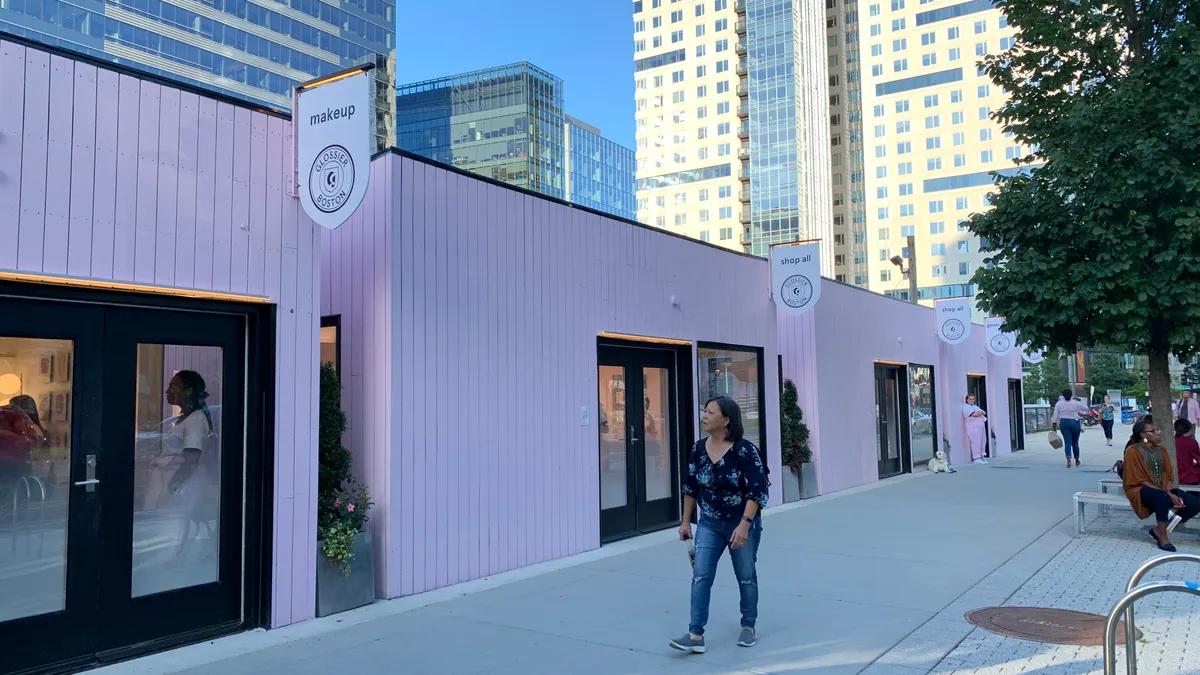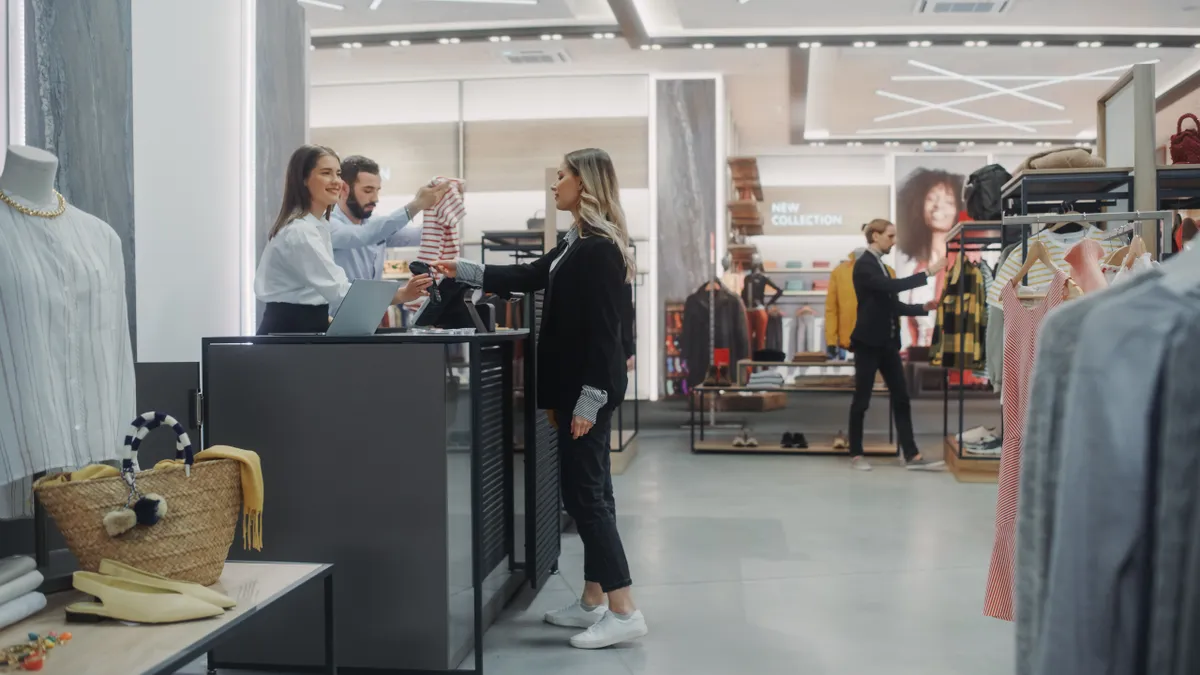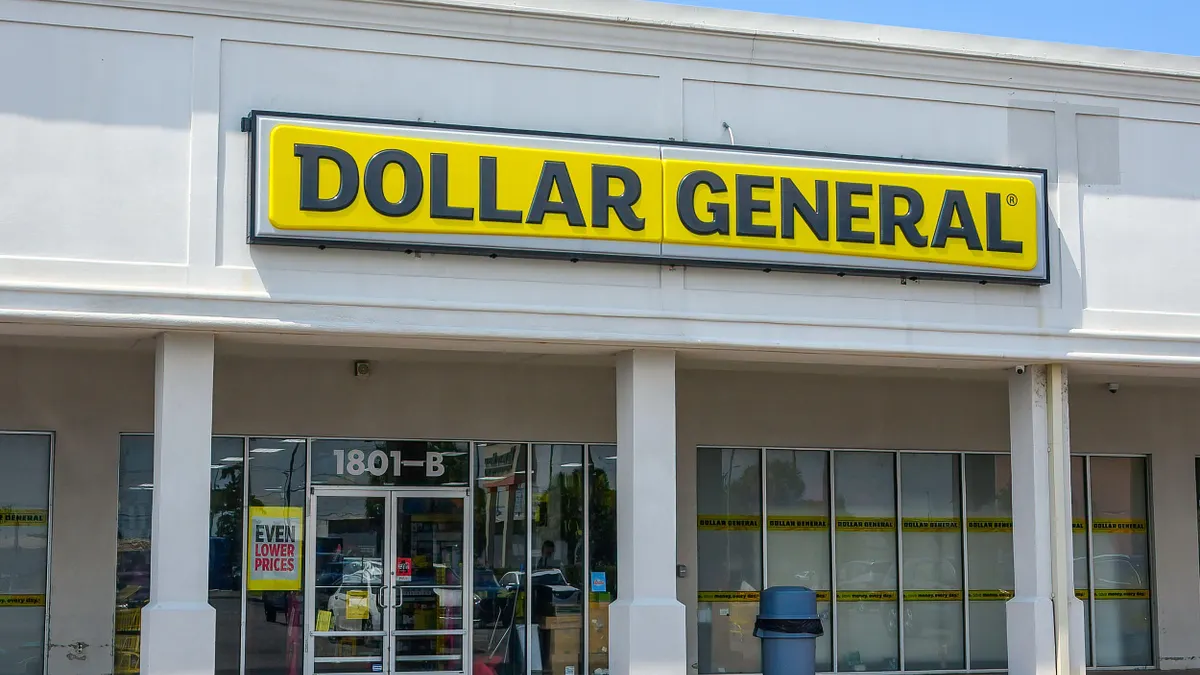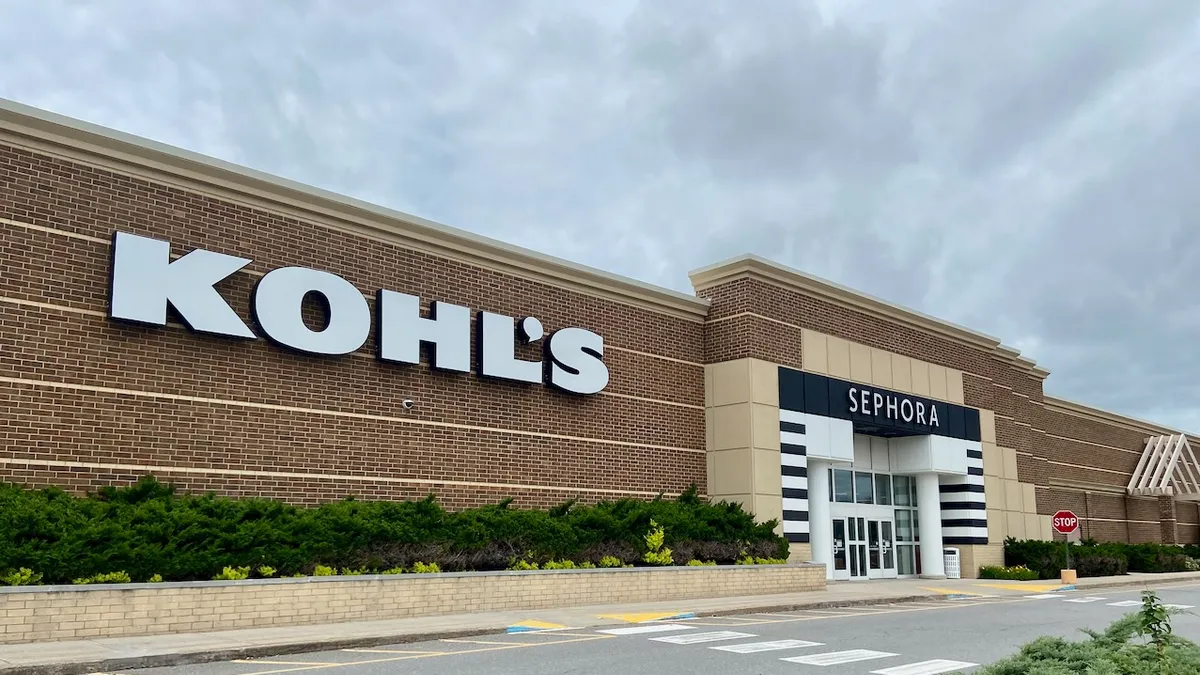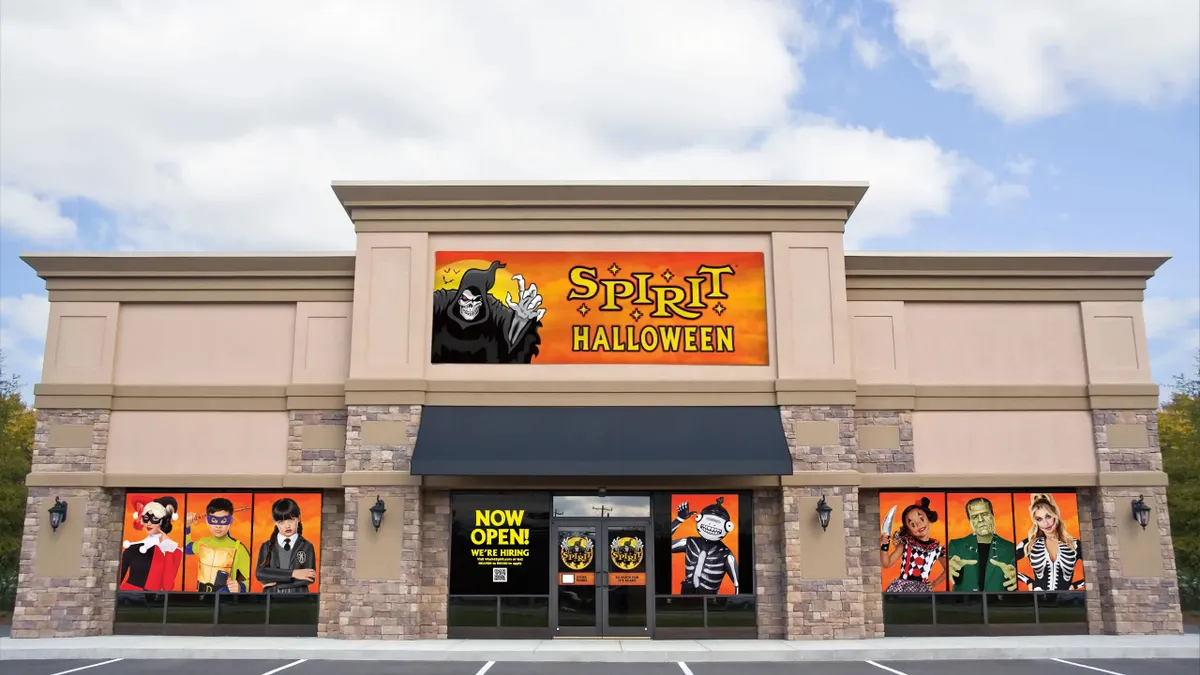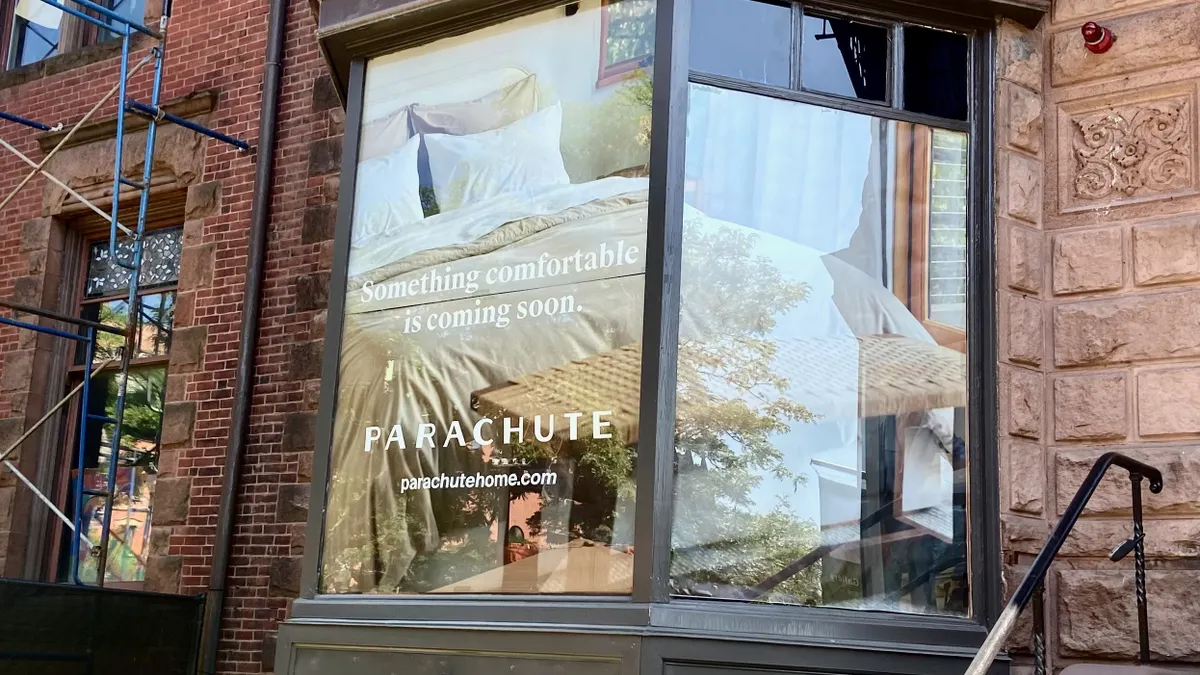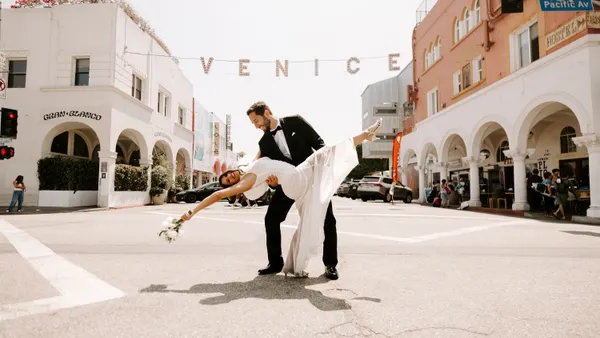What's the purpose of a store? Technically, it's to offer up products to customers and, more importantly, get them to buy those products. But in recent years, the purpose of a store has been brought into question as startups and traditional retailers alike explore what has become the pinnacle of physical retail: experiential retail.
Or, to specify: successful experiential retail.
The idea of fostering a closer relationship with customers, one that's not just focused on the transactional act of shopping, has led to all kinds of experimentation within stores, with varying degrees of usefulness. Some examples, like basketball courts and soccer fields in athletics shops, are geared toward giving customers a better way to test out the products they might want to buy, while others, like Lululemon's newest concept, are intended to build community around the brand through activities like workout classes, group meditations and scheduled events.
It's led to some store features that now seem inseparable from a given category, like product testing stations and in-store services at beauty retailers, but it's also created a glut of companies all trying to figure out how to create something meaningful, and not always successfully. The shiny object syndrome threatens retailers with large upfront costs for, say, a chain-wide touchscreen system customers don't end up using.
Yet all the same, this transition in how retailers think about the store has led to some distinctive concepts: the Canada Goose cold room, Casper's miniature house displays and Glossier's Instagrammable everything. For many, it's seen as the savior of brick-and-mortar retail, but the coronavirus outbreak has changed a lot about shopping in the short term, and it's unclear how much will stay changed in the long term.
When will customers get excited about laying down on a mattress again? What will be the reason to keep hanging out in beauty stores when product testers aren't accessible?
According to a recent Coresight Research report, only one in five consumers expect to buy apparel in the first month after lockdown, and of those who have changed their purchase levels during the pandemic, one-third expect it to be more than six months before their spending returns to normal. Health and sanitation concerns will also color the way customers see stores, and occupancy limits will dampen the ambitions of many, including any retailer thinking of launching a pop-up in the near future.
"You can forget pop-up stores for a while," Brendan Witcher, Forrester vice president and principal analyst, said in an interview. "The idea of a pop-up store is going to be a 2021 initiative."
In the meantime, how will existing experiential retail respond? And what are the threats to brick-and-mortar retail's knight in shining armor in the long term?
Making experiences virtual
Over the month of March, as retailers grasped the severity of the pandemic in the U.S., they shuttered stores on a large scale, temporarily blocking customers from their most valuable assets. Many immediate plans were put on hold — capital expenditures cut back, growth plans extended further into the future — but retailers weren't entirely sitting still.
For most, e-commerce was still up and running, and retailers jumped into getting solutions like buy online, pick up in-store ready to roll out, and finding ways to engage with customers online rather than through their store associates. But how do you translate the idea of "experience" to a digital format?
Nike, for one, offered up its NTC Premium streaming workout service for free, after a similar move translated to increased digital sales in China. Zappos put its customer service employees to work on a hotline, talking to whoever called in about "anything." And since then, many others have jumped in to try and build community with customers online.
"It's about giving the shopper the choice of how they want to engage with your brand, and this is only going to help brands give consumers more of a choice."

Lauren Bitar
Head of Retail Consulting at RetailNext
American Eagle threw a virtual prom, and according to Andrea Szasz, a principal in the Consumer practice at Kearney, beauty brand Kiehl's has been hosting hour-long conversations with their beauty advisers on social media.
"Most of them are kind of feeding into the idea that you want to really create a community of your loyal consumers and that these consumers have to exchange with each other," Szasz said in a conversation about how beauty retail will be impacted by the coronavirus. "So the community of the consumers is on one side, but the community of the experts is on the other side."
While these virtual events have been a bandage solution for now, they might become a staple of how retailers think about experiential retail in the future. At the moment, over a quarter of respondents to a Coresight Research report expect to switch shopping from stores to e-commerce, and two-thirds are spending more online than they used to.
Being forced to focus more on the online channel has given retailers the necessary infrastructure to offer up virtual solutions for their events in the future, even when U.S. retail has returned to normal, said Lauren Bitar, head of retail consulting at RetailNext.
"It's about giving the shopper the choice of how they want to engage with your brand, and this is only going to help brands give consumers more of a choice," Bitar said.
Bitar also sees potential for some companies to get creative with bridging the gap between physical and virtual experiences, for example by mailing necessary items to customers before a virtual event like a wine tasting or a cooking class.
Working around the human touch
In the move to reopen stores, experiential retail will likely be far from retailers' minds for the time being. Setting up basic protocols like social distancing, hand sanitizer stations and one-way aisles will take precedence. Many retailers are also either requiring or encouraging shoppers to wear masks, if they choose to come to stores at all.
A recent study by First Insight found that 78% of women would not feel safe testing beauty products, 65% would not feel safe trying on clothes in a dressing room and 66% would not feel safe working with a sales associate — significant numbers considering women are the target of many categories of retail. Hand sanitizer and limited occupancy were measures most people (80%) said would make them feel safest, though masks (79%) also ranked high.
But even with those measures in place, consumers also need to be willing to go to a physical store, and while some street-facing locations may fare better, many consumers have put malls on their temporary list of places to avoid. According to Coresight Research, 48% of respondents expect to avoid shopping centers or malls after lockdown, the highest measured, and 32% of respondents expect to avoid "shops in general" as of May 13.
"The big question is: If you need to put in all these safety measures to protect people, then why would people come in, in the first place when they could just order online?" Witcher said. "The minute that it goes away, and they don't need to order online anymore, then you don't need the safety protection, right? It's almost like we're creating a scenario that doesn't make any sense."
But some customers will, no doubt, head back to physical stores. And when they do, retailers with highly experiential spaces will have to have a strategy for that space, and a way to limit touch engagements. For something like beauty product testers, maybe it means giving out small samples instead, Bitar suggested, though that raises waste concerns if used on a broad scale.
"Experiential retail was not a slam dunk before all this."

Brendan Witcher
Vice President and Principal Analyst at Forrester
It may mean no touchscreens for the time being, or dedicating an employee to cleaning off touchscreens after every use, or maybe just being more creative with how stores use existing technology. Witcher pointed to beauty apps as an example where maybe customers and associates can pull up the same experience on their individual phones that would normally be displayed on a touchscreen in the store, and still be able to walk through the experience together.
Michael Brown, a partner in Kearney's Consumer Products and Retail Practice, also noted that while consumers may be reticent to engage in high-touch elements of experiential retail for the moment, those aren't the only elements that factor into the in-store experience.
"Although the touching and feeling is going to stop for a while, still other senses of sight and smell and sound can be engaged in a retail environment," he said in an interview.
In short: Retailers will have to be creative with how they tackle experiential retail in the near term, but it shouldn't be packed away entirely. For some retailers, it may be a higher priority than for others, depending on how important or valuable the experience was to the store.
"Experiential retail was not a slam dunk before all this," Witcher said, noting that in-store experiences need to add value, like Sephora's makeup testing or Kohler's testable shower spaces.
"There's a lot to turning a physical environment into something more than a place to shop, but it has to be approached strategically," he added.
Christmas without crowded stores?
While retailers have an idea of temporary changes that will have to be enacted, much of the long term is still unknown — largely because much about the coronavirus outbreak is still unknown. But as stores reopen, retailers will have to reevaluate the short-term fixes they put in place, and whether or not they're still relevant, and still financially viable.
The widening of fulfillment options, including curbside pickup and free same-day delivery as a courtesy to the shopper, will likely have to be rolled back, or retailers will have to begin charging for them, Witcher said. For some, the services are maintainable, but others don't have a good financial reason to continue offering them, especially as services like curbside pickup take away from the impulse purchases retailers would usually get if a customer entered the store.
"You can't just afford to keep customers happy and go out of business," Witcher added.
Much of the expenses allocated toward experiential retail for the year will likely be redistributed to areas that are more pressing. Retailers were already skipping on much more important expenses at the beginning of the crisis, including rent. Many retailers also cut back on marketing expenses for similar reasons, though marketing will need to pick up again now that stores are reopening.
"Coming out of this pandemic, retailers will be in fairly dire straits. Many of them, if not all, will be missing at least on top-line revenue, if not also on bottom-line margin come Dec. 31," Witcher said, noting money will likely be spent on investing in supply chain or marketing. "It's not a reflection of experiential retail, it's just expensive. It's an expression of a shifting priority for the right now, but it's certainly not the new normal."
Lingering in the background is also the threat of a resurgence of the coronavirus in the fall, which would hit retail at its most important time of the year. That would be devastating in any year — a bad holiday season can make the difference between bankruptcy or not for distressed retailers — but it would be especially so when retailers are still actively trying to recover from the roughly two months of store closures.
"It will be impossible to deliver traditional volumes of business in the Thanksgiving to Christmas period."

Michael Brown
Partner in Kearney's Consumer Products and Retail Practice
The holiday season is also traditionally the time when retailers pull out all the stops, with engaging window displays and mall Santas helping to bring in hordes of extra shoppers. Retailers will have to spend some money ahead of time to ensure the holiday season doesn't go to waste, according to Brown, and instead works to recoup some of the losses from the first half of the year.
"Retailers are going to have to invest to bring the consumers to stores, so I think they're going to be very aggressive when they get through the slow days of summer," Brown said, predicting a "slow ramp up" through summer to the fall. "Retailers are also going to have to create special events to launch the holiday season early because based on occupancy restrictions, the potential for a close down again in the fall — it will be impossible to deliver traditional volumes of business in the Thanksgiving to Christmas period."
Brown noted that retailers are going to have to start bringing in holiday traffic "as early as the beginning of October."
Assuming occupancy restrictions of one form or another are still in place during the holidays, Bitar suggested stores may start passing out tickets or appointment times for customers to shop — some already have for the time being — and could even run more experiential events or pop-ups this way, as long as there's enough consumer interest. (There will likely be enough empty space in malls to fill, at the rate with which retailers are filing for bankruptcy.)
Malls will also have to be extra aware of how many shoppers are in stores at the same time.
"When we think about occupancy, a lot of the time we're thinking of stores," Bitar said. "But in a mall, even if you've got an occupancy rate, you need to be very conscious of where in the mall a consumer is because if your occupancy is 1,000 and you've only got 500 in your mall but they're all in the same spot — you've got an occupancy problem."
As we look to the future, whether it's the upcoming holiday season or even into 2021, some of the biggest lingering questions for retailers are: When does this end, and will consumers ever be enthusiastic about touch-and-feel shopping experiences again?
The first is difficult to answer, and the second can be guessed at and analyzed as time passes. For the moment, visiting physical stores is still unsettling for customers. A Gartner report tracking consumer concerns found that the "Safety of going to businesses' physical locations" was a top concern in the week of May 7 to May 12. But that doesn't mean it will remain so forever.
"Society, at least here in the U.S., we tend to forget things pretty quickly. I mean, it wasn't too long after 9/11 that we were back on airplanes," Witcher said, noting that consumer interest in physical shopping will likely snap back pretty quickly once the coronavirus outbreak is behind them. Yet it's still fairly unclear when retail will be able to discuss the pandemic in the past tense.
"As much as I want to subscribe to the 'We're coming out of this' story arc, I just don't think we are yet," Witcher said. "I think there's residual effects that we haven't yet felt."



